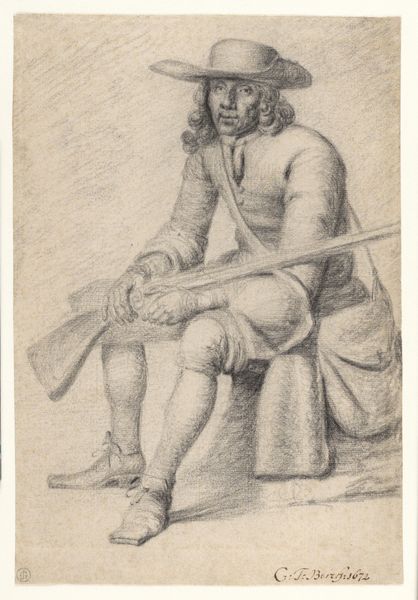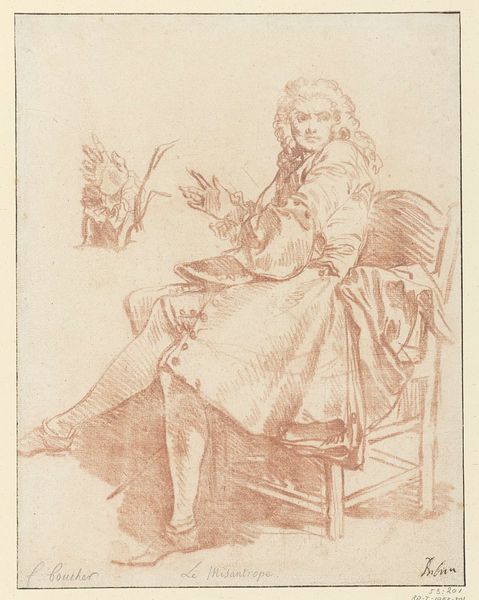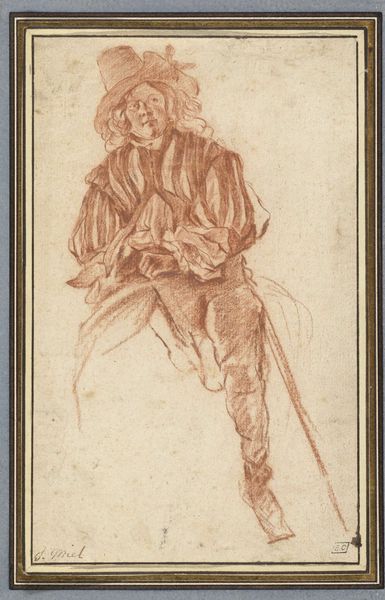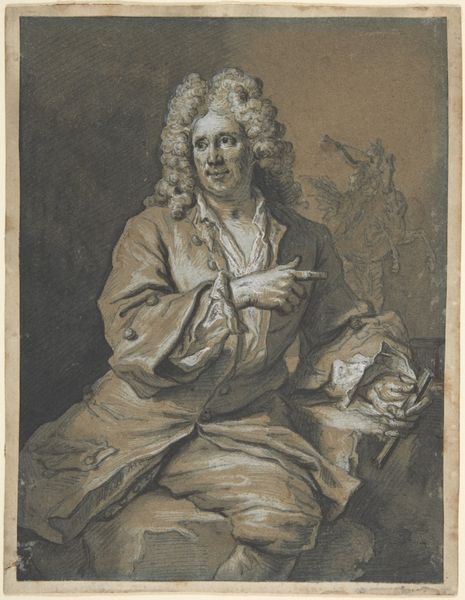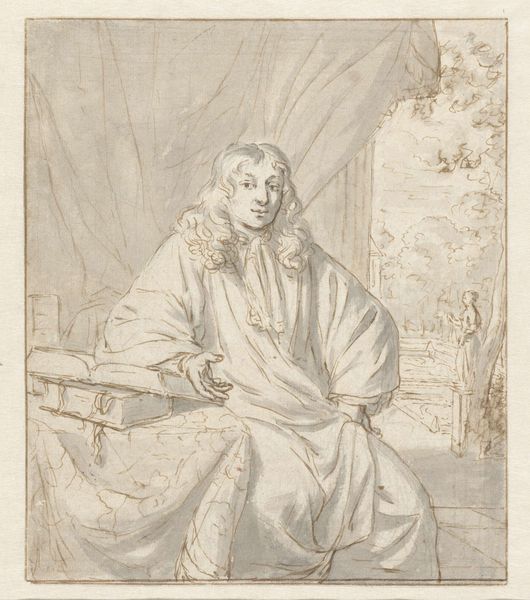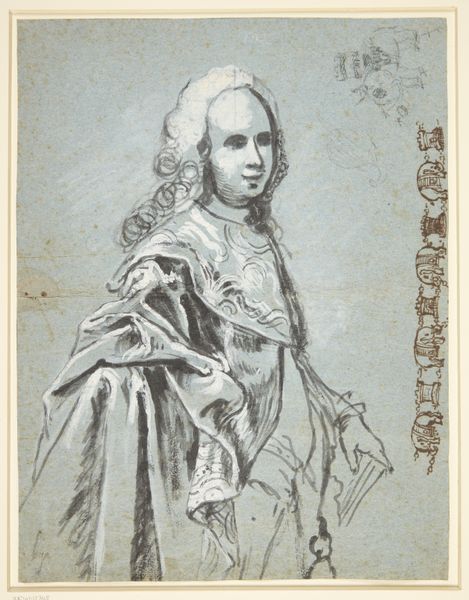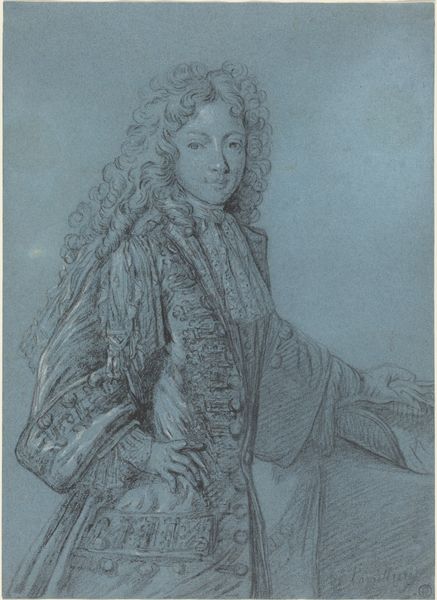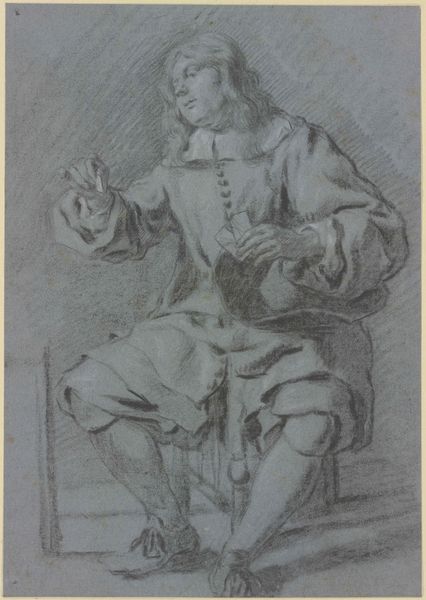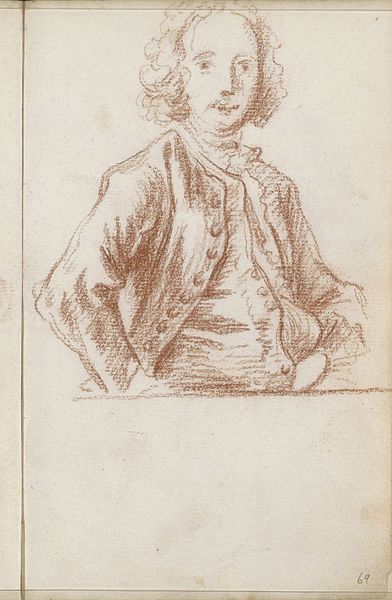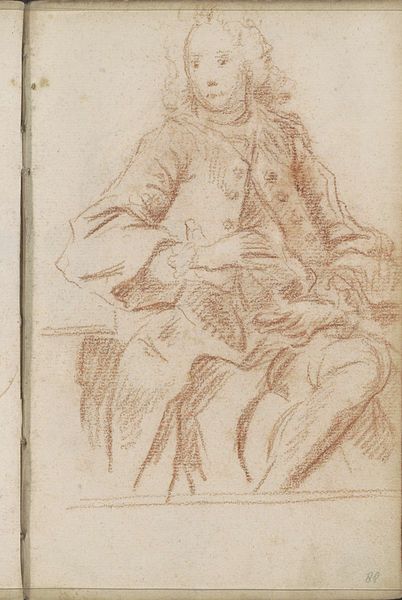
Selvportræt? siddende, med lærred og palet, fremstrakt hånd 1625 - 1677
0:00
0:00
drawing, paper, pencil
#
drawing
#
self-portrait
#
baroque
#
paper
#
coloured pencil
#
pencil
Dimensions: 290 mm (height) x 230 mm (width) (bladmaal)
Editor: So, this drawing, "Selvportræt? siddende, med lærred og palet, fremstrakt hånd," which roughly translates to "Self-Portrait? Seated, with Canvas and Palette, Outstretched Hand," made by Heinrich Dittmers sometime between 1625 and 1677 using pencil, colored pencil, and paper, strikes me as a curious statement. What stories do you think this portrait tells us? Curator: It certainly presents a particular image. During the Baroque period, self-portraiture became increasingly linked with asserting an artist's status within the societal hierarchy. Dittmers here presents himself with the tools of his trade – the palette and possibly a canvas – but what's striking is the almost languid pose and the melancholic expression. It begs the question, does this portrayal aim to elevate the artist, or is it a commentary on the role itself? Editor: That’s a very good question. It feels almost self-aware, a bit like the artist is both presenting and questioning the idea of the artist as a figure of importance. Curator: Exactly. Think about the patrons, the academies, and the systems of power that defined the Baroque art world. How did artists navigate those complex social landscapes, and what role did self-representation play in that navigation? Perhaps Dittmers offers us a glimpse behind the curtain, revealing not just the idealized image, but also the inherent tensions and uncertainties within the artist's position. What do you make of the inscription "Jhs. Majlons" at the top? Is it another clue to interpret the portrait’s societal standing? Editor: Good point, I have to research it further! It adds to this portrait’s intricate commentary on the artist's identity in its time. Thanks, I learned a lot. Curator: Absolutely. It highlights the public and political aspects that continue to shape how art is viewed and its intended impact.
Comments
No comments
Be the first to comment and join the conversation on the ultimate creative platform.


